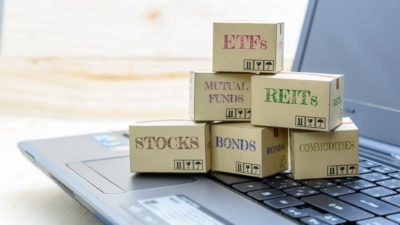Investing in bonds is a topic that has been growing in interest in recent months. With inflation remaining stubbornly sticky in most advanced economies, compounded by rising oil prices, fears that interest rates may not have peaked just yet have been rattling global markets in recent weeks.
When interest rates rise, so do the interest rates that newly issued bonds pay. Given the stability and income security that bonds offer over shares, many investors are opting for this asset class's 'safety' and are ditching ASX shares in favour of bonds and fixed-interest investments.
But I'm not. No matter what's happening with the global economy, I'd still pick investing in ASX shares every day of the week over the perceived comfort of a bond.
Bond… James Bond
Sure, investing in a bond offers income security that a dividend-paying ASX share simply can't match. Dividends are entirely at the discretion of the paying company from year to year. That's why we see some dividends grow over time, while others are cut or even eliminated.
But the interest payments from a bond are guaranteed. If the bond issuer fails to pay their interest, it can result in bankruptcy being declared (or a sovereign default in a government's case).
This is for one simple reason: compounding. See, a quality ASX share allows investors to share in the benefits of compound interest with no upside limit. We simply cannot say the same for a bond investment.
To illustrate, let's discuss how investing in bonds works. You buy a bond from an issuing government or corporation, which is essentially a loan from the buyer to the seller of the bond.
So let's say we spend $100 on a bond that pays a 5% interest rate and has a duration of 10 years.
Every year, we can expect a coupon interest payment of $5. After the ten years are up, we get our original $100 principal back, for a total gain of $55, leaving our investor with $155 after 10 years.
Why I prefer ASX shares over investing in bonds
Let's posit instead that we invest our $100 in an ASX share that pays a 4% dividend yield and is able to grow its earnings by 5% per annum.
Sure, we would get an annual income stream of $4 to start with, which is obviously less than what our bond is paying.
But if our ASX share is able to grow its earnings by 5% every year, then its share price should appreciate in line with this growth over time. Thus, if investors are willing to assign the same earnings multiple to our share over those ten years, by the time the decade is up, we can reasonably assume our company's shares could grow in value from $100 to $155.
What's more, if the company grows its dividends at the same rate as it has grown its earnings, our investor would be enjoying a dividend yield of 6.2% after the decade is through.
That's the magic of compounding at work. And it's something that bond investors just can't enjoy in the same way as share investors can.
Of course, the price we pay for this superior earnings potential is share market volatility, as well as the risk that we might not be able to pick out high-quality businesses that are capable of effectively compounding our money.
But this is the risk that I'm willing to take by investing in shares and rejecting what I see as the mediocre returns that investing in bonds offers us.








